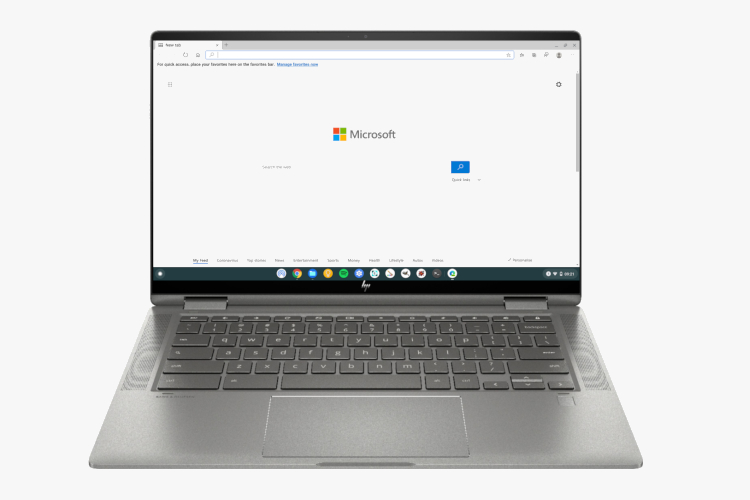

You can open Microsoft Edge and use the web browser as you normally would on any other traditional PC. Your Chromebook will take a minute or two to install Microsoft Edge, and once it's done, the browser should be available in the app drawer. In the pop-up window, select “Accept and continue”.ĭouble click and launch the file your Chromebook just downloaded, then select “Install”.Ĭlick the "OK" button to close the confirmation window.

Click the blue "Download" button under the "Dev Channel" map. Open "Google Chrome" and visit the Microsoft Edge download portal. You can now proceed with the installation of Microsoft Edge. It will automatically launch the Linux terminal when done. Your Chromebook should start downloading and configuring Linux. Leave it as the default if you don't plan to install more than a few Linux apps. Specify the username and disk size of your Linux partition. Scroll down until you find "Linux (Beta)" and click the "Activate" button next to it. To do this, go to your Chromebook's “Settings” from the app drawer or Quick Settings panel (by clicking the time in the lower right corner of the Home screen). Since you'll be installing the latest Linux client from Microsoft Edge, you'll need to activate Linux on your Chromebook first if you haven't already. Whether you want to try out what Microsoft's browser has to offer or you're sick of Chrome, here's how to install Edge on Chrome OS.

What is stored and synced can also be specified inside of a menu, and this is the case for both browsers as well.Chromebooks are designed to run Google Chrome, but with the addition of Linux, you can install other browsers on your Chromebook, including Microsoft Edge. Google Chrome and Microsoft Edge can both store and sync everything from bookmarks to passwords used across the web, and both browsers allow you to pick up anything you were previously viewing on a different system, provided that you're logged into your account and syncing is enabled. However, it can get a little pushy about keeping itself as your default browser. Microsoft doesn't force you to make a decision over whether you're comfortable forwarding your data, it simply gives you more protection when you choose the more stringent security option. The major downside to relying on Google Chrome's Enhanced Security feature, however, is that it's based entirely around giving your personal data to Google. Microsoft Edge is known to have a more sophisticated internal firewall that speaks to Microsoft Defender SmartScreen, which is more capable of protecting your device from being targeted by bad actors while browsing the web.


 0 kommentar(er)
0 kommentar(er)
